IF THE TRAGEDY IS FEMALE

Photo Source: Antonino Rampulla
The traditional
Cycle of Classical Plays at Syracuse Greek Theatre into its fifty-second edition:
from Friday, May 13 to Sunday, June 19 2016 are taking place every other day of the representations
Elektra Sophocles and
Alcestis Euripides, and ends with the staging of the
Fedra of Seneca on days 23-26 June. As announced by the National Institute of Ancient Drama, presenting the edition,
the woman is the absolute star of this season and is precise and original connotations in the texts chosen. The theater of Syracuse, second in size only to that of Epidaurus, will open the dance with the
Elektra by Sophocles, directed by Gabriele Lavia and the interpretation of Federica Martino. Translation by Nicola Crocetti, Lavia has drawn the deep strong character of Electra, considerably different from the resigned and helpless protagonist of The Libation Bearers of Aeschylus or Euripides gloomy version, which take a wearying and irremediable guilt. Although the plot is unchanged compared to other transpositions and also here entrusted to the brother of Electra, Orestes, the task to avenge his father Agamemnon, by killing his mother, Clytemnestra, and her lover, Aegisthus, Sophocles has outlined an unexpectedly called female portrait, a Electra determined that rebels against the liabilities of your condition and announces revenge.

Completely different is the pathos that pervades the
Alcestis Euripides' tragedy, as announced from Apollo in the prologue, with a happy ending, according to many scholars, a real satyr play to conclusion a tragic tetralogy. Directed by Cesare Slight enhances the translation of Maria Pia Pattoni and especially enhances the interpretation of Galatea Ranzi in the title role, Stefano Santospago in the guise of Heracles and Danilo Nigrelli, who here makes his debut as Admetus. The legend is told that the sacrifice of Alcestis, wife of the king of Fere, Admetus, for which Apollo is able to mediate with the Fates he is permitted to escape Death, provided you find who is offering in its place. Alcestis is sacrificed, bringing out selfishness, cowardice and deceit also of the closest relatives to Admetus, as elderly parents. To restore the happy endings, you must wait for the jovial appearance of Heracles, who coming accidentally learned of the misfortune of his friend, confronts Hades to bring back the gift of the faithful wife.

If Sophocles 'Electra has already been performed at the Greek Theatre of Syracuse three times, in 1956, in 1970 and 1990 and Euripides' Alcestis has had a previous representation in 1992, the
Fedra Seneca is an interesting novelty, not confined to a few dates in June, but on the contrary will continue in other important theaters and archaeological sites in the name of a real tour of the tragedy in Sicily. The choice of text is bold and unexpected current and urges directed by Carlo Cericiello to contend with the still open debate about the relationship with the Greek models, ie the
Phaedra by Sophocles, but especially the
Ippolito crowned Euripides, renovation of the former
Ippolito veiled always the same author. At the center of the narrative is the unrequited love of Phaedra (here played by newcomer Imma Villa), second wife of Theseus, for her stepson Hippolytus, that is consumed on the scene between similarities and differences with the Greek tragedies and located in the revelation of their secret and incestuous passion and the inevitable suicide, the only possible outcome. Seneca remove it from the story the internecine war between Aphrodite and Artemis, who in Euripides' Hippolytus and Phaedra text move like pawns, contrasting the desire and the blame of the first to the second virginal chastity. The treatment that makes it, therefore, is much more introspective, deep and follows the emergence and maturation of the feeling of love in Phaedra, describing the degeneration in disease, psychosomatic despair, to allow a modern-sharing for the sad resignation of the protagonist.

Greek Theatre are staged, therefore,
unusual women, which deviate from the margin under the thumb of many ancient and transpositions themselves with their experience,
proud of their self-denial and self-sacrifice, determined to carry on burning vengeance and ready to follow their passions to death: the tragedy is served.
Text Source: Sefora Adamovic
ARCHIVE NEWS
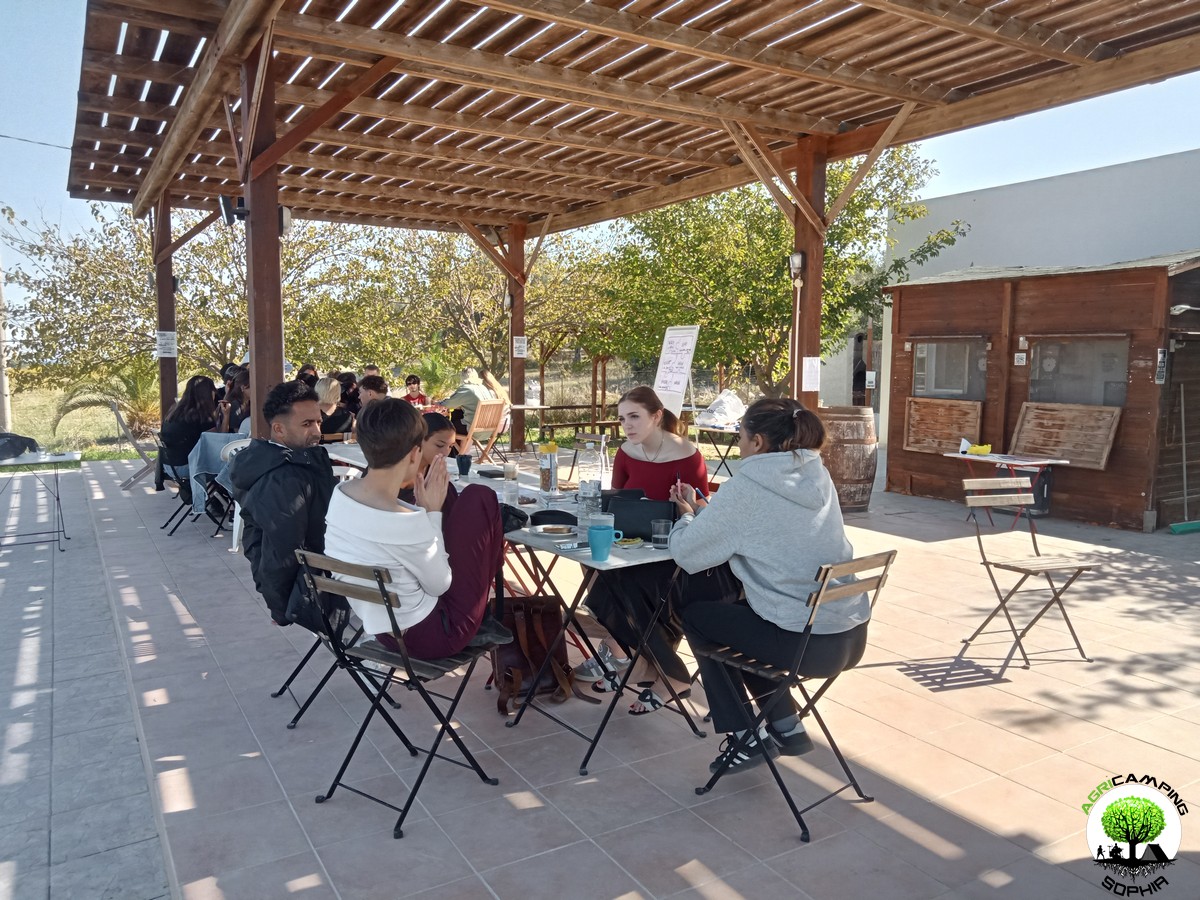 DO YOU WANT TO ORGANIZE AN ERASMUS AT AGRICAMPING SOPHIA?
DO YOU WANT TO ORGANIZE AN ERASMUS AT AGRICAMPING SOPHIA?
WHAT IS AGRICAMPING SOPHIA?
It is a campsite with tent pitches, glamping tents, mobile homes and bungalows
WHERE IS IT?
In Italy, in Sicily, near Syracuse, in Pachino: 36.736883, 15.095610
HOW TO CONTACT US?
info@agricampingsophia.it
(SPEAK ENGLISH) +39 3473079242 – (ONLY SPEAK ITALIAN) +39 3452396095
WHAT DO WE OFFER?
We offer hospitality and catering for Erasmus projects
FOR HOW MANY PEOPLE?
We can have 4-7 single beds in the Socrate Bungalow, 6-10 single beds in the Platone Mobile Homes, 4-6 single beds in the Aristotele Mobile Homes, 4 single beds in the Iblone Mobile Homes, 4 single beds in the single beds in the Empedocle Glamping Tents. In total we therefore have 18 comfortable single places or 31 single places with a fair spirit of adaptation.
IN WHICH PERIOD CAN AGRICAMPING SOPHIA BE AVAILABLE?
The most suitable periods to use our services...
 CART RUTS MODELED ON SOFT ROCK?
CART RUTS MODELED ON SOFT ROCK?
Read also RACK OR HOUSING FOR CLOGS?
Some cart ruts from the Targia district, in Syracuse, and most of the cart ruts from Granatari Vecchi, in Rosolini, give the impression of having been impressed, modelled, on a rock that was originally viscous, not entirely solid. As absurd as this hypothesis may seem, especially in Granatari Vecchi, the softness of the shapes and the at least anomalous uniformity of the rock bank, as if it were a concrete casting, which hosts the cart ruts, is unicum compared to the lithic context in the area.
In Targia this phenomenon is less impressive but if we consider the cart ruts essentially cart tracks, therefore furrowed roads indirectly resulting from the repeated passage of carts along the same route, we do not understand why such uniformity and smoothness is present, in the majority of cases, also on the parts not affected by the passage of the...
 RACK OR HOUSING FOR CLOGS?
RACK OR HOUSING FOR CLOGS?
Read also CART RUTS CUT FROM QUARRIES
In the presence of slopes, even slight ones, in some cart ruts in the Targia district, in Syracuse, central holes are found with a diameter of between 30 and 50 centimeters and a depth of 15-20 centimeters, spaced about 50 centimeters apart. Neither the position (they are not exactly in the center of the cart ruts and perfectly aligned with each other), nor the shape appear perfectly regular: either the passage of time and any wear have profoundly modified their original shape or, simply, they have never had a systematic regularity. However, the offset in position between one hole and another is never completely “off-axis”: there is always a portion about twenty centimeters wide that coincides with the same portion of the previous and subsequent hole. The best preserved and most defined holes are found in the cart ruts usually called Scala...
 CART RUTS CUT FROM QUARRIES
CART RUTS CUT FROM QUARRIES
Back to CART RUTS AND A FEW TOO MANY PROJECTIONS
I will skip any preamble, referring to what has already been written regarding the presence of cart ruts in south-eastern Sicily.
The easy academic tendency has been, in most cases concerning cart ruts, to consider them in terms of the latomie, or quarries, with which very often (for example in the cases of the Targia or Pizzuta districts) they share the same territory.
According to this theory, the carraie would have been indirectly created due to the wear of the rock at each passage of carts or sleds loaded with extracted stone blocks. I will not repeat the arguments presented so far in order to demonstrate that this is a theory that has little solid foundations on an in-depth analysis of the cart ruts. However, I will add a piece by demonstrating the implausibility of a connection between them in both chronological and functional...
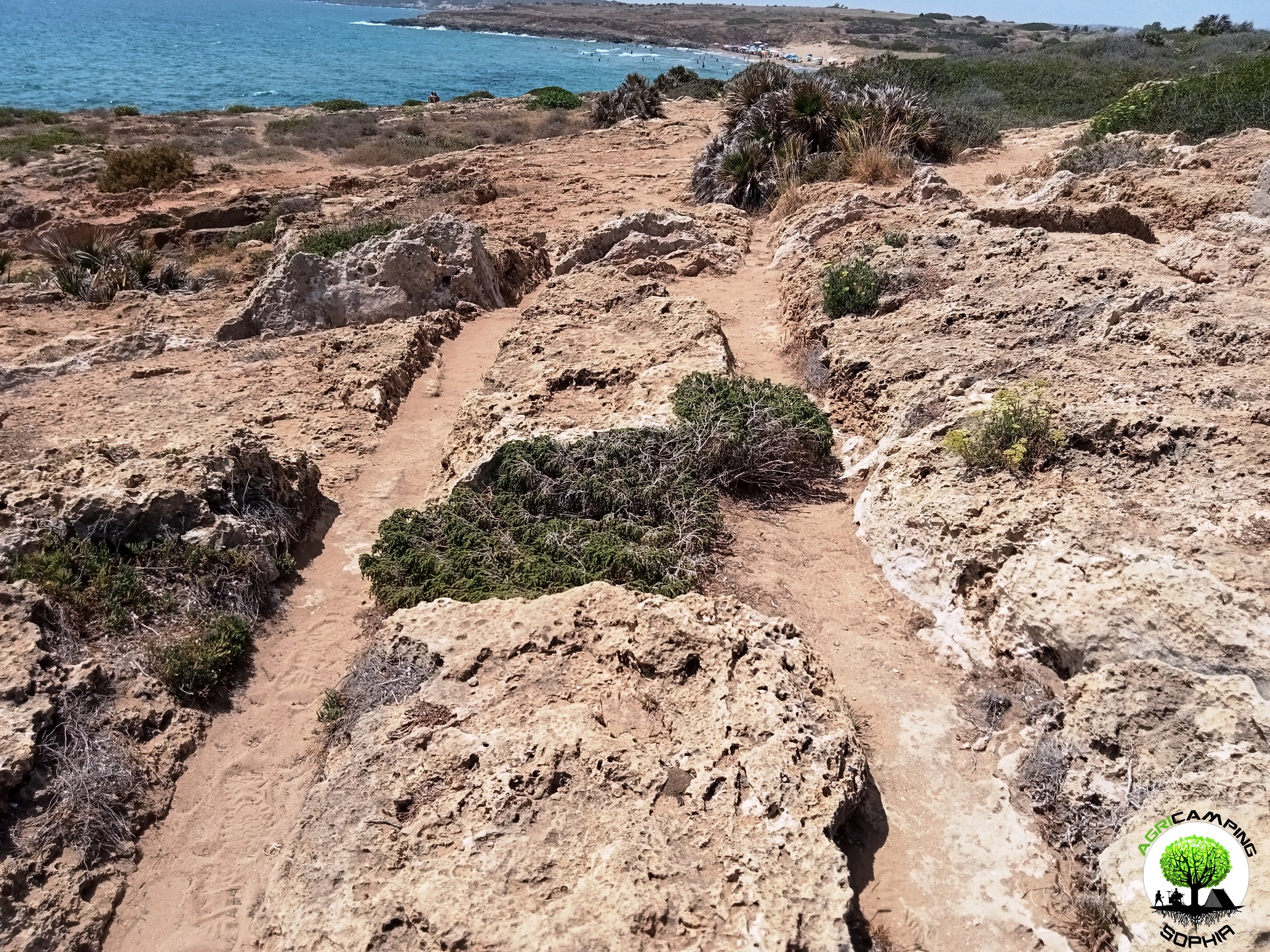 CART RUTS AND A FEW TOO MANY PROJECTIONS
CART RUTS AND A FEW TOO MANY PROJECTIONS
Read also THE POLISHING OF THE CART RUTS
I will skip any preamble, referring to to what has already been written regarding the presence of cart ruts in south-eastern Sicily.Considering the possibility that the cart ruts were gradually dug by the passage of carts pulled by pack animals, for example pairs of oxen, observing certain sections of the cart ruts present in the Granatari Vecchi district, in Rosolini, and in the Pizzuta district, close to the Vendicari Reserve, two questions arise:
1. Why force the animals to pass over rough surfaces and protrusions high, compared to the base of the furrows, even 60-70 centimeters?
2. Why, in the presence of such obstacles, not opt for a detour?
For Mottershead, Pearson and Schaefer such protrusions appeared later, since at the time of the passage of the wagons, a layer of earth covered the rocky bank, thus not making the obstacle...
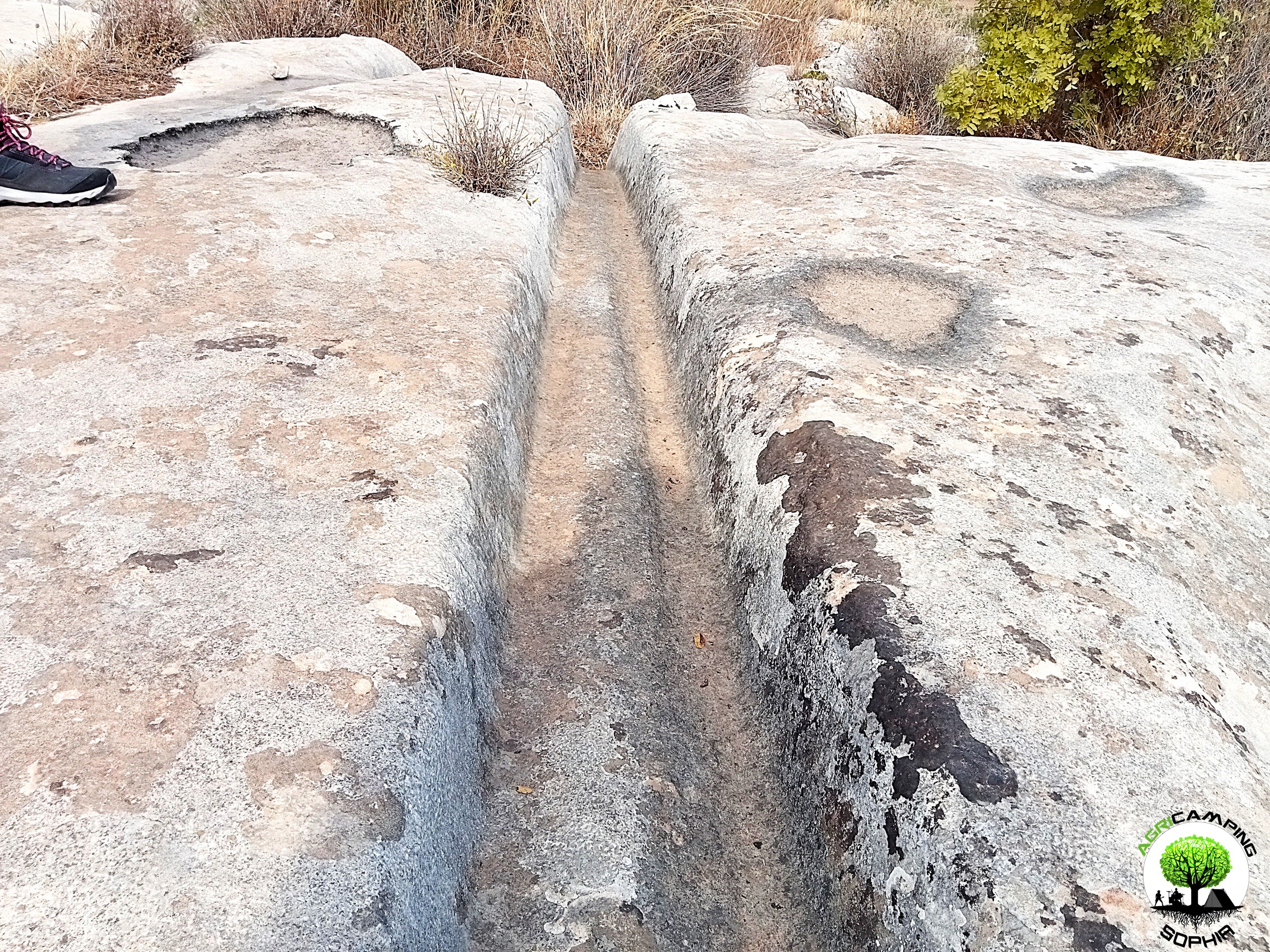 THE POLISHING OF THE CART RUTS
THE POLISHING OF THE CART RUTS
Read also THE PROBLEMATIC EDGES OF THE CART RUTS
I will skip any preamble, referring to to what has already been written regarding the presence of cart ruts in south-eastern Sicily.
To proceed with this comparison I have chosen a probable capital and the corner of a recess present in a block of the northern walls of Eloro that would seem to resemble a pinax, that is, a niche that would have housed a fresco of the heroa, but which a more careful observation refers to a system functional to the grip of the block through a pincer winch. Both elements, like the curt ruts, have remained at the mercy of the elements for millennia, and are therefore subject to comparable wear and tear due to the passage of time. The finishing of the capital should be of a high standard, since it is an architectural element that also has an aesthetic function. The recess, on the other hand, should have...
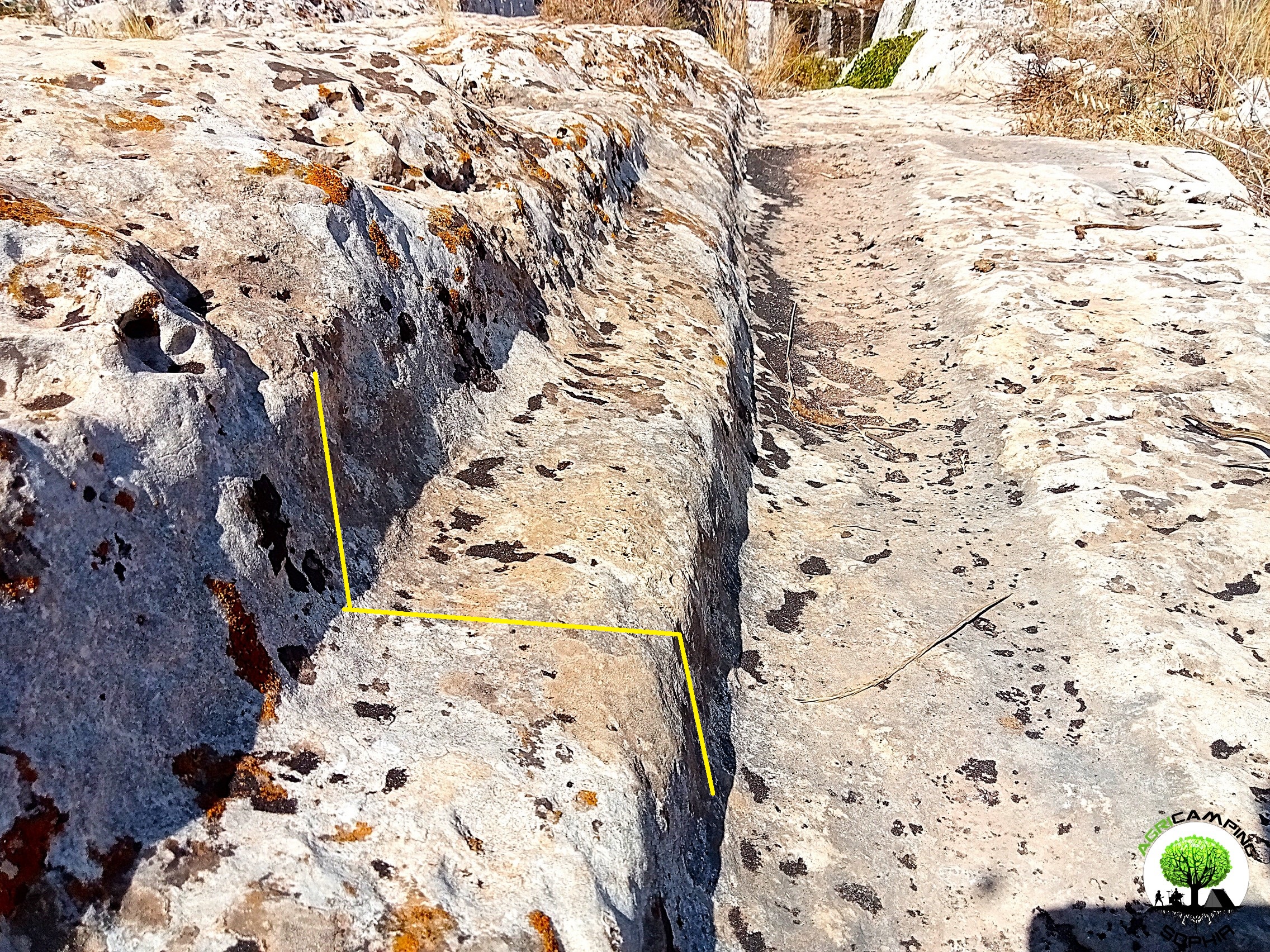 THE PROBLEMATIC EDGES OF THE CART RUTS
THE PROBLEMATIC EDGES OF THE CART RUTS
I will skip any preamble, referring to to what has already been written regarding the presence of cart ruts in south-eastern Sicily.As can be seen in other sites around the world, in some cart ruts I visited, in particular in the Cugni district in Pachino, in the Granati Vecchi district in Rosolini and in the Targia district in Syracuse, a clear border can be seen, a sort of frame, next to the grooves, more marked externally, barely noticeable internally.
The borders I measured have a width of 14-20 centimeters and a height of 8-10 centimeters.
Not all cart ruts have such frames present or particularly evident, regardless of the degree of wear or degradation. They are found above all in cart ruts with less deep grooves.
As already described in detail, given the presence of furrows with a depth of even 65-70 centimeters, the wheels of a possible vehicle would have had to have a...
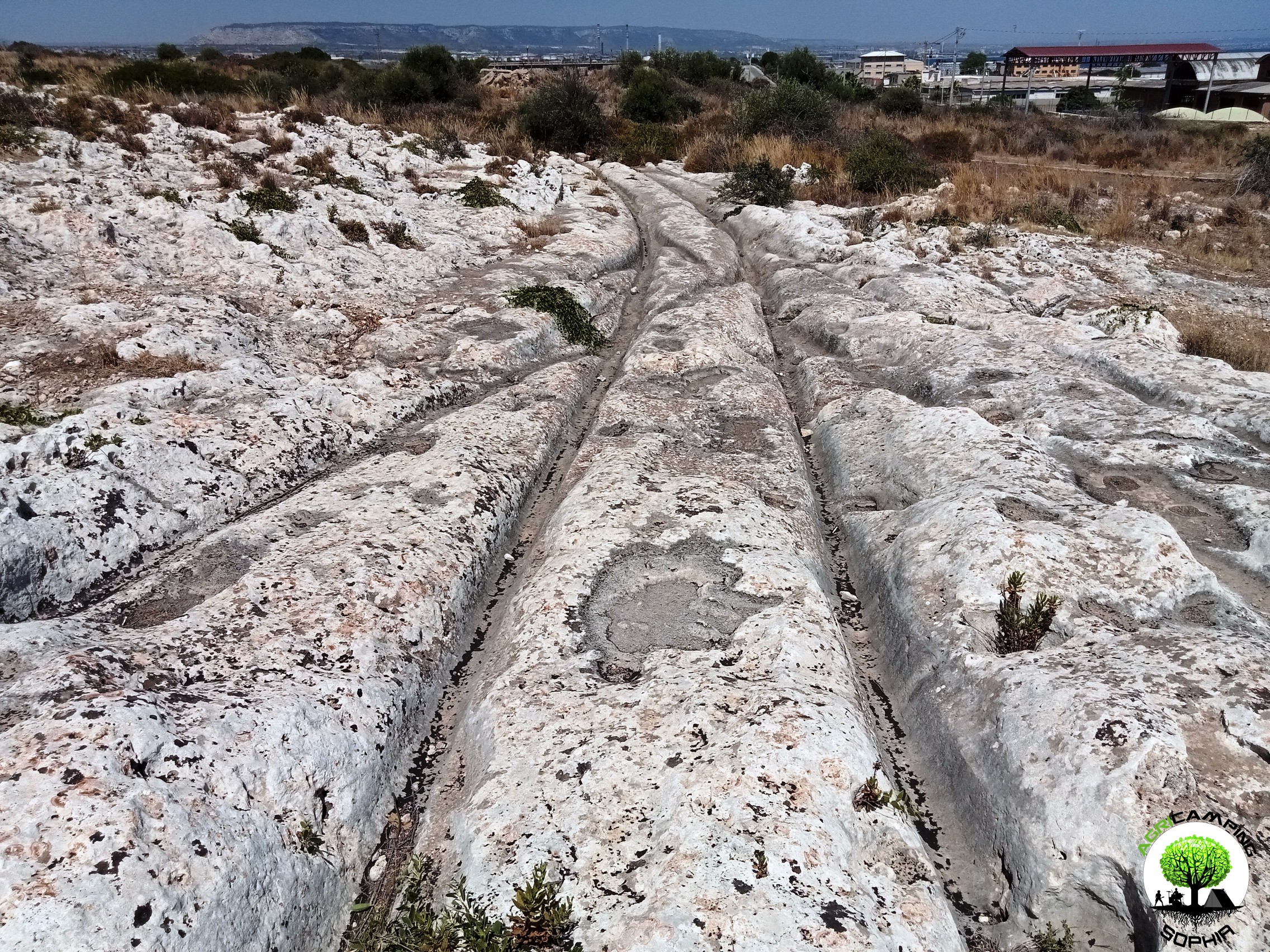 THE PROBLEM OF CART RUTS IN SOUTH-EASTERN SICILY (PART FOUR)
THE PROBLEM OF CART RUTS IN SOUTH-EASTERN SICILY (PART FOUR)
Click here to return to third part
Clapham Junction
As in the Maltese site Misrah Ghar Il-Kbir, also in the Targia and Granatari Vecchi districts the cart ruts intersect and cross each other in a similar way to the track switches in a railway station. The nickname Clapham Junction that was given by David H. Trump to the Maltese site, derives precisely from the similarity with the famous English railway station. For Sagona these are agricultural furrows and water channels, for Mottershead, Pearson and Schaefer these are abandoned paths due to obstacles and wear. Obviously we do not know what the morphology of the Syracuse and Rosolini territory was at times when the cart ruts were traced, but considering the current context, there certainly would have been no agricultural reason to build them, given the presence of fertile land, springs and fresh water courses just a few kilometers...






 DO YOU WANT TO ORGANIZE AN ERASMUS AT AGRICAMPING SOPHIA?
DO YOU WANT TO ORGANIZE AN ERASMUS AT AGRICAMPING SOPHIA? CART RUTS MODELED ON SOFT ROCK?
CART RUTS MODELED ON SOFT ROCK? RACK OR HOUSING FOR CLOGS?
RACK OR HOUSING FOR CLOGS? CART RUTS CUT FROM QUARRIES
CART RUTS CUT FROM QUARRIES CART RUTS AND A FEW TOO MANY PROJECTIONS
CART RUTS AND A FEW TOO MANY PROJECTIONS THE POLISHING OF THE CART RUTS
THE POLISHING OF THE CART RUTS THE PROBLEMATIC EDGES OF THE CART RUTS
THE PROBLEMATIC EDGES OF THE CART RUTS THE PROBLEM OF CART RUTS IN SOUTH-EASTERN SICILY (PART FOUR)
THE PROBLEM OF CART RUTS IN SOUTH-EASTERN SICILY (PART FOUR)